In April 15, 1981, Austrian conductor Herbert von Karajan (1908-1989) organized a press conference at the ORF regional studio in Salzburg to introduce to the world a revolutionary new medium, the Compact Disc Digital Audio System, or CD for short.
At the invitation of Karajan, who had actively participated in the realization of the new medium, the CD was presented by its developers and producers, Akio Morita (1921-1999), co-founder and president of Sony, Joop van Tilburg, head of the Philips Audio Division, and Richard Busch, managing director of PolyGram. To be heard here is an excerpt from that press conference, which includes Karajan's extensive commentary.
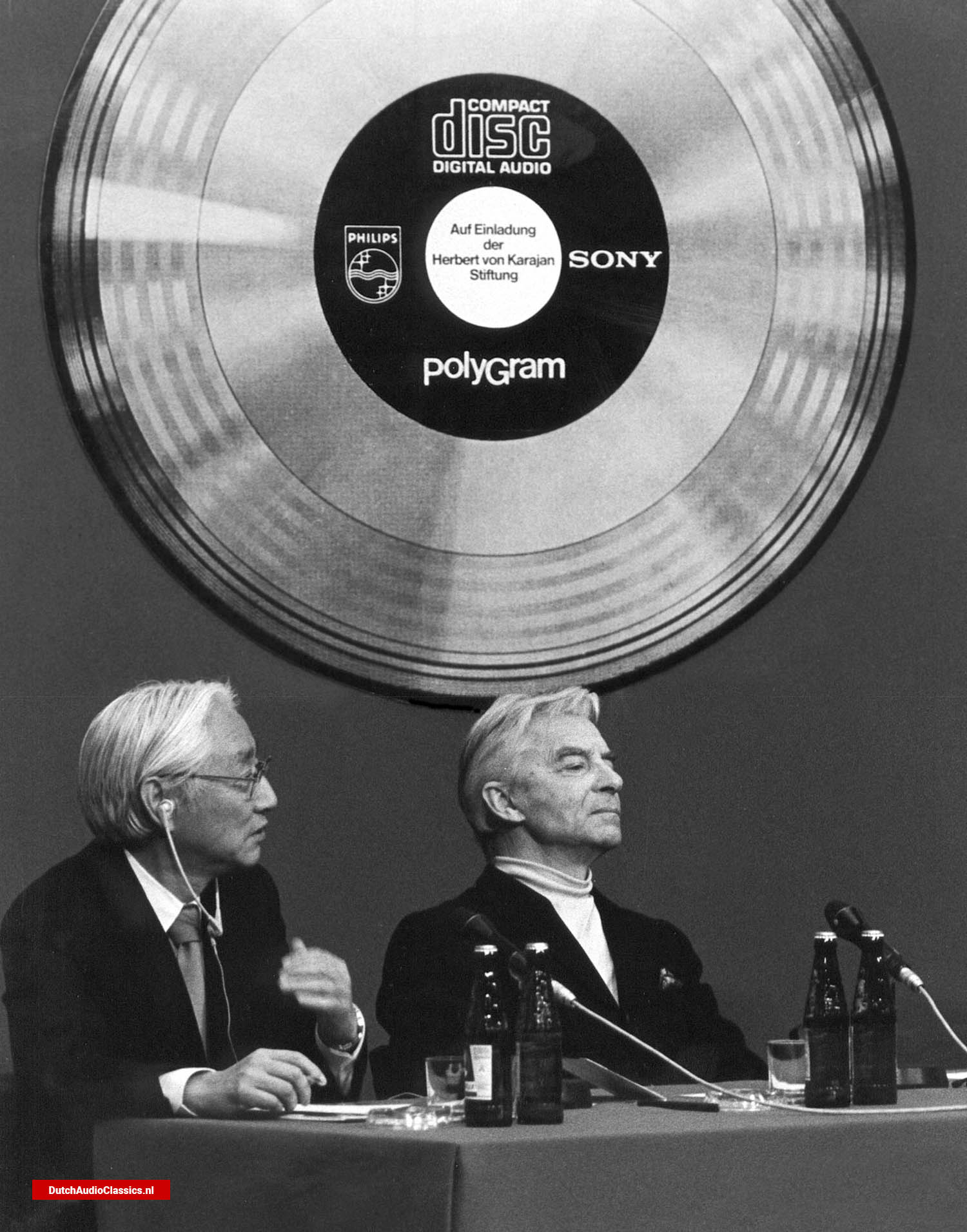 Akio Morita (Sony) and Herbert von Karajan. 15 april 1981
Akio Morita (Sony) and Herbert von Karajan. 15 april 1981
"A miracle": this was the word Herbert von Karajan used to describe the development of the new recording technology. The great musician, as well as the amateur scientist and technician, understood from the beginning that the radical change in the sound recording and reproduction principle, in that the sound information was no longer stored as an analog copy of the vibrations - as had been the case since the emergence of the record - but was encoded in myriads of digits, opened up new horizons in the world of 'recording musicʻ: Now one could deal with sounds in one's own way and transfer any conceptions to the new medium.
For the characteristics of these new technical possibilities he used the ambiguous word: manipulate. "This manipulating, which is positive in our sense, is as important as conducting itself" - he particularly emphasizes during the Salzburg press conference and, to illustrate his train of thought, brings up one of his favorite recordings: the Variations op. 31 by Arnold Schoenberg.
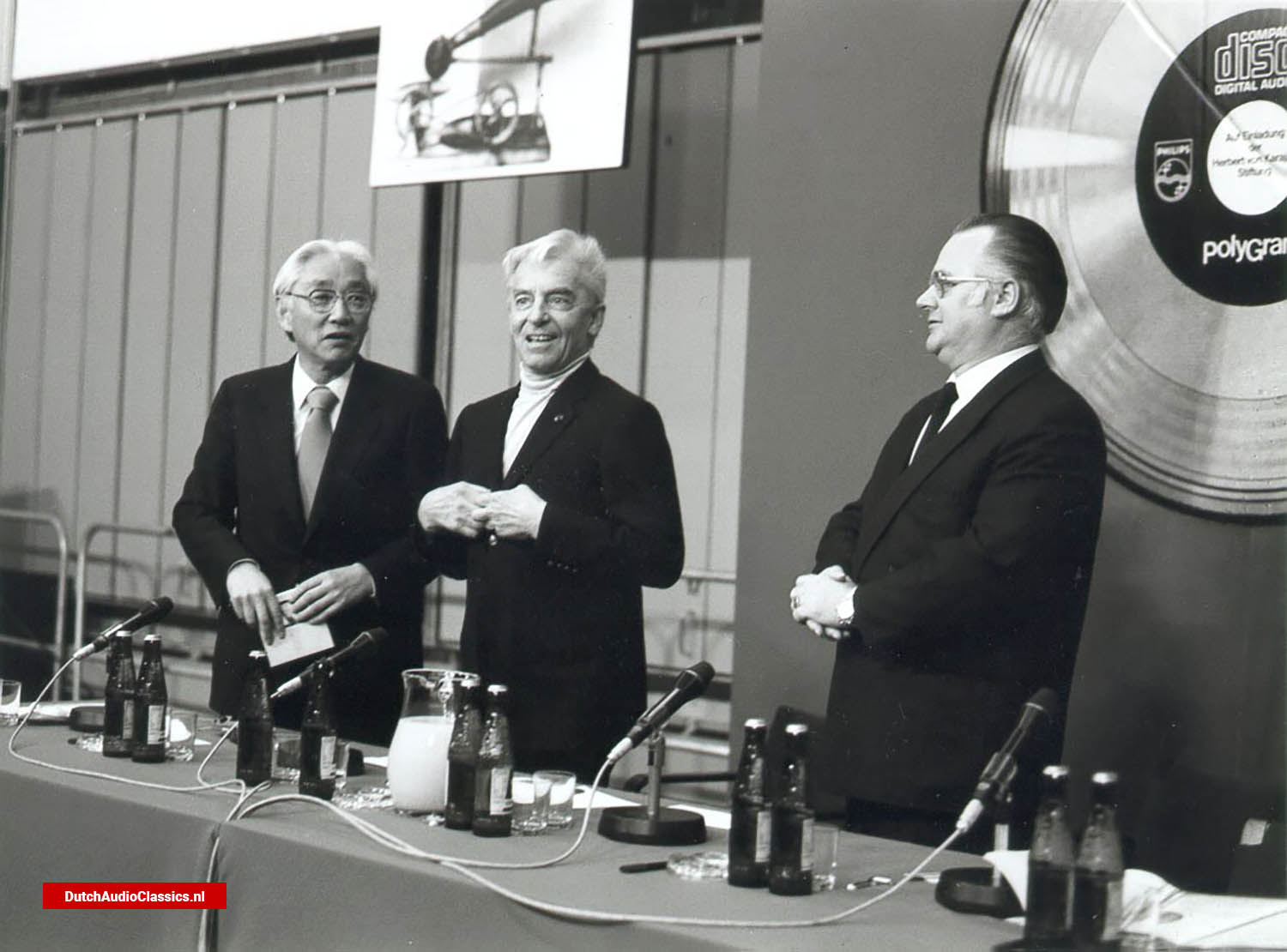 Akio Morita (Sony), Herbert von Karajan and Joop van Tilburg. 15 april 1981
Akio Morita (Sony), Herbert von Karajan and Joop van Tilburg. 15 april 1981
Recorded with the Berlin Philharmonic, this disc was part of one of his own sound experiments, the creative process of which one of Karajan's contemporaries, Wolfgang Stresemann, describes in detail: "One uses extra microphones for voices to be emphasized that cannot be heard adequately for reasons of instrumentation, transposes individual orchestra members accordingly, experiments until the desired sound image emerges" - but such a sound image, of course, is what the composer is asking for. A very simple 'recipeʻ at first glance, but one that was not at all easy to realize in the studio of the time: the recording of this work, which lasted only about twenty minutes in total, stretched from December 1972 to February 1974! Now, however, the process of sound manipulation was considerably simplified and accelerated.
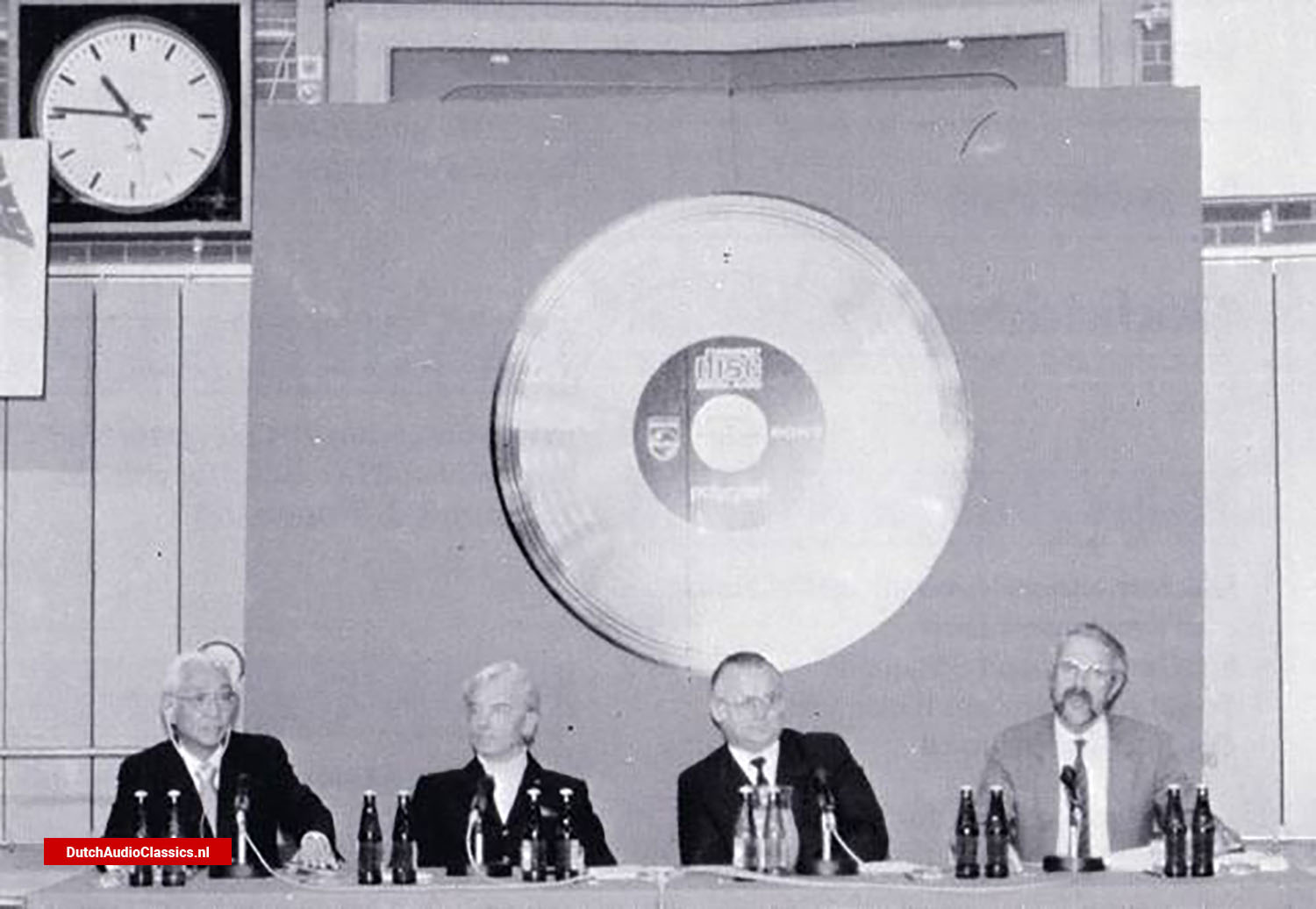 Presenting the Compact Disc in Salzburg (from left to right): Akio Morita (Sony), Herbert von Karajan, Ch. van Tilburg (Philips) and Richard Busch (Polygram)
Presenting the Compact Disc in Salzburg (from left to right): Akio Morita (Sony), Herbert von Karajan, Ch. van Tilburg (Philips) and Richard Busch (Polygram)
Karajan was also fascinated by the new dynamic range that was now possible. Wolfgang Gülich, his longtime sound engineer, recalled that the musician always wanted "to get a natural dynamic across the record." "And that's not possible!" - protested the prominent sound engineer at the time. Once truly unattainable, this goal was now much closer: the invented CD players presented at the press conference, among others, were capable of decoding the entire complex of timbre, pitch and volume at such a high, digital - rather than analog - level that the quality of the recordings was not lost. To demonstrate this feature, Karajan prepared four sound samples that were played during the presentation. Most were taken from his own digital releases by Deutsche Grammophon and Philips, respectively: The incidental music from Act 1 of Parsifal by Richard Wagner, an excerpt from Act 1 of The Magic Flute by Wolfgang Amadeus Mozart, and the finale of Act 3 of Falstaff by Giuseppe Verdi. One of the sound samples - perhaps even that with the broadest tonal spectrum - was specially recorded by Karajan: An excerpt from the final piece (The Great Gate of Kiev) of Modest Mussorgsky's cycle, Pictures at an Exhibition, orchestrated by Maurice Ravel.
In addition to the enormous possibilities in sound offered by the new reproduction process, Karajan pointed out a trend in the press conference that points to the future: "In today's world, the way one spends one's free time is naturally very much tied to what one listens to" - with this general statement the conductor begins his commentary on the CD. Surrounding everyday life with music, listening to it while walking or in the car, belonged to those most current tendencies of the second half of the 20th century, which Karajan grasped very well. It is not by chance that he makes special mention of the design or size of the invented medium: compact and relatively light, the design of the CD as well as the CD player brings the desired mobility that was unthinkable with record players.
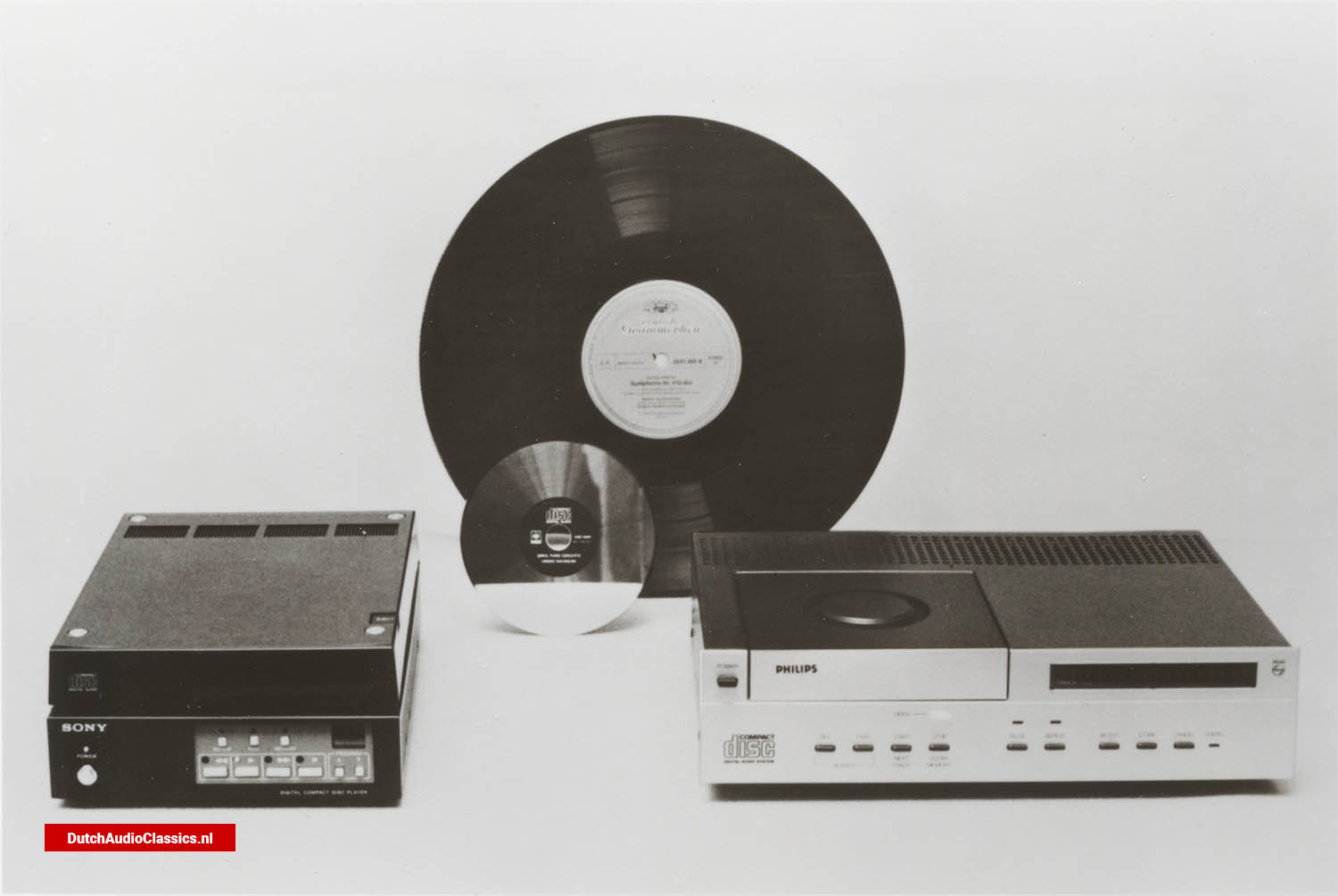 On the left, Sony's Compact Disc prototype player; on the right, Philips' prototype.
On the left, Sony's Compact Disc prototype player; on the right, Philips' prototype.
Ever since Karajan had seen and heard a prototype of the CD player in the private home of Akio Morita, the president of Sony, he had been fascinated by the new technology. It was of great concern to him to bring the importance of this innovation closer to the public: "I really think that it is necessary for the people, who are concerned with music, to have a clear view of the whole subject and therefore I would prefer that you decide for a demonstration of the first system" - he wrote already in May 1980, when the system was still in the development stage, in one of his letters to Akio Morita, ̶ "The buying public will then know what to do, because only a small percentage is aware of the technical facts for the future. The average buyer thinks that when on a record is the stamp 'digital' he already has a superior quality." Following this idea, the conductor insisted on presenting the new technology in his hometown a year later. And already in the same year of the presentation, 1981, the production of the CD began with his recording of the Alpine Symphony op. 64 by Richard Strauss, which was available to everyone the following year, 1982. The release of this first compact disc in the history of classical music simultaneously symbolized the beginning of a new era in the history of 'recording musicʻ: the era of digital recording and playback. It would be no exaggeration to say that the development of this technology changed our lives forever. And each of us can probably echo the words of Herbert von Karajan: "We are grateful that it has happened".
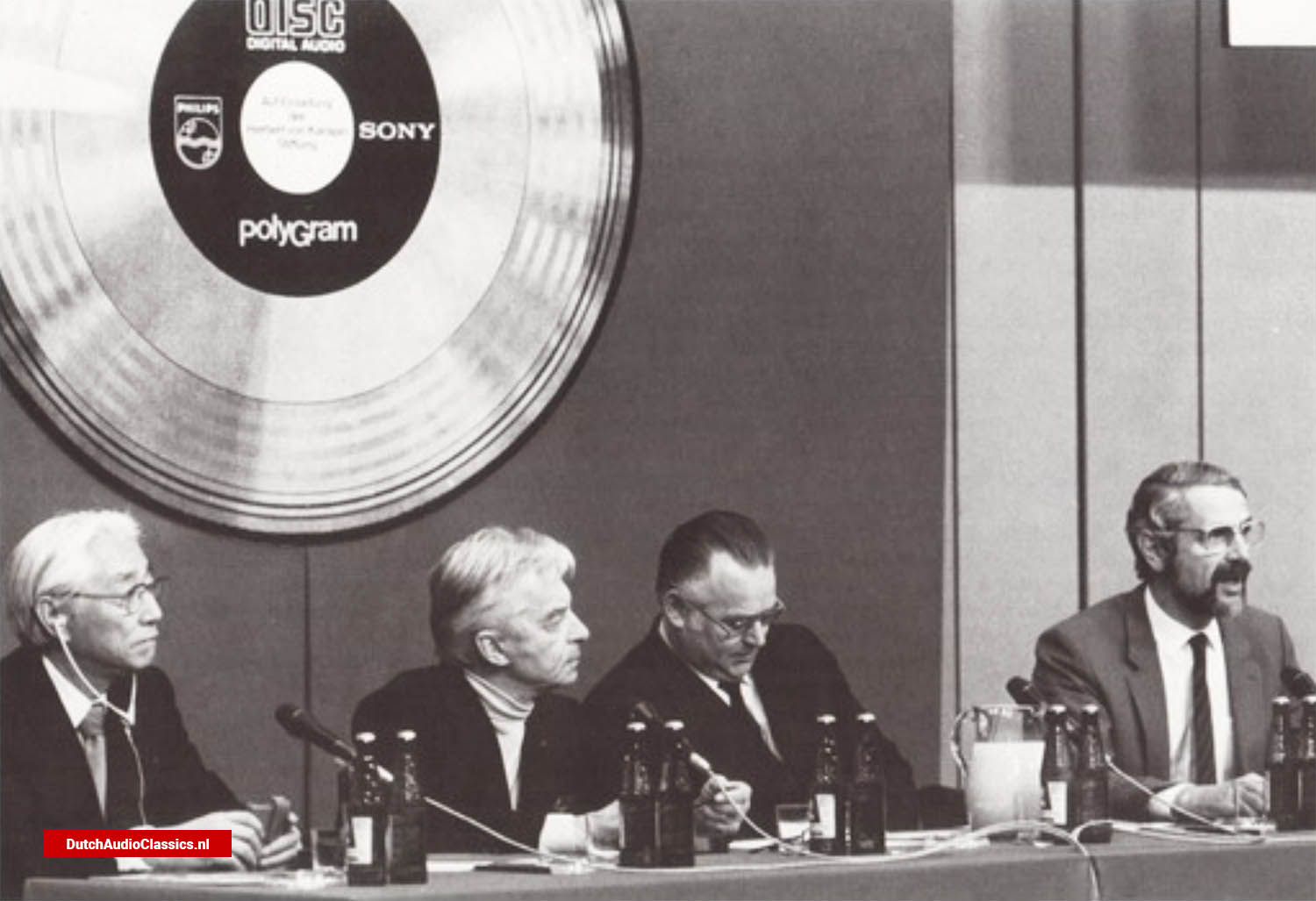
 Akio Morita (Sony) and Herbert von Karajan. 15 april 1981
Akio Morita (Sony) and Herbert von Karajan. 15 april 1981
 Akio Morita (Sony), Herbert von Karajan and Joop van Tilburg. 15 april 1981
Akio Morita (Sony), Herbert von Karajan and Joop van Tilburg. 15 april 1981
 Presenting the Compact Disc in Salzburg (from left to right): Akio Morita (Sony), Herbert von Karajan, Ch. van Tilburg (Philips) and Richard Busch (Polygram)
Presenting the Compact Disc in Salzburg (from left to right): Akio Morita (Sony), Herbert von Karajan, Ch. van Tilburg (Philips) and Richard Busch (Polygram)
 On the left, Sony's Compact Disc prototype player; on the right, Philips' prototype.
On the left, Sony's Compact Disc prototype player; on the right, Philips' prototype.
